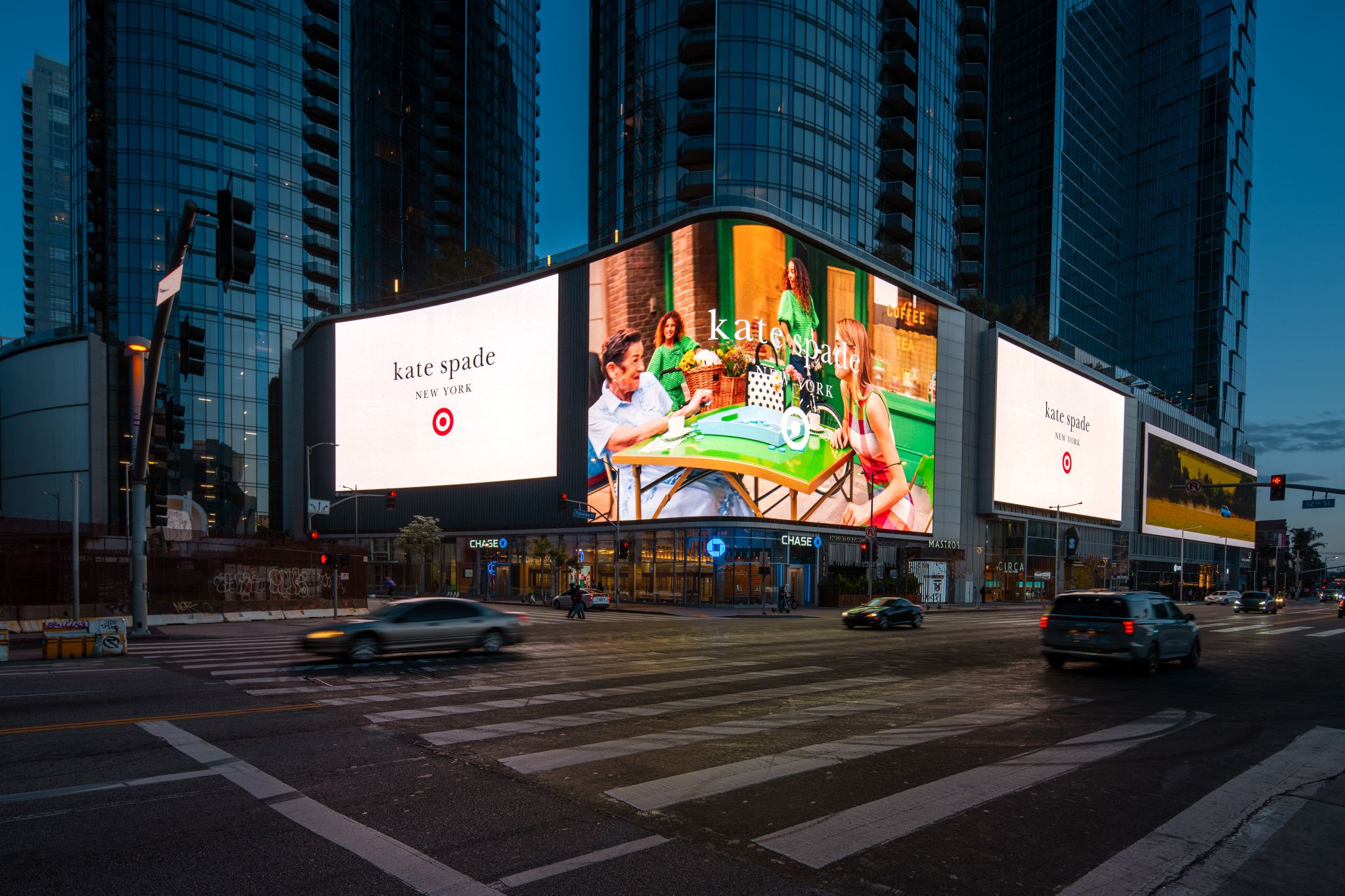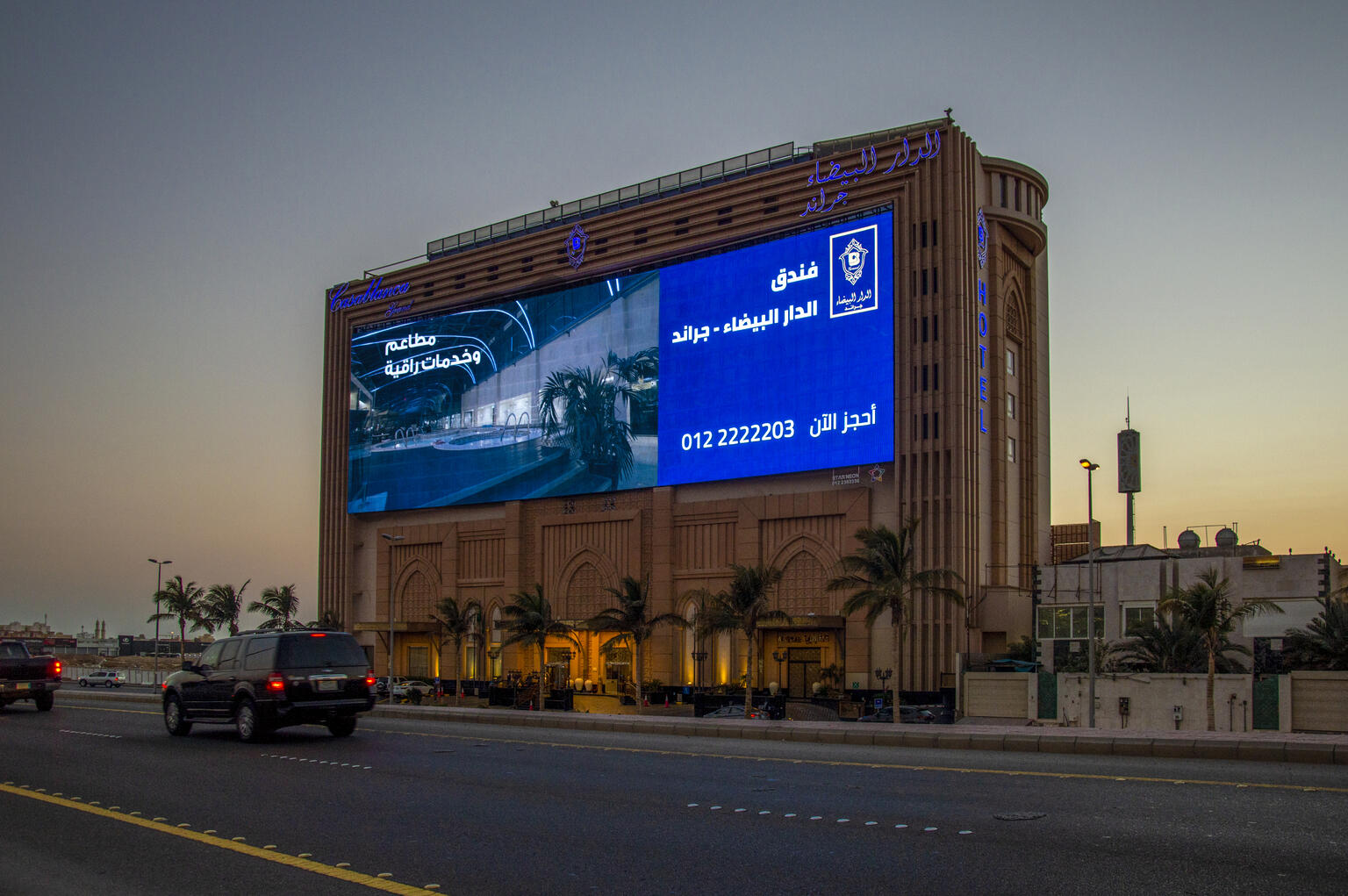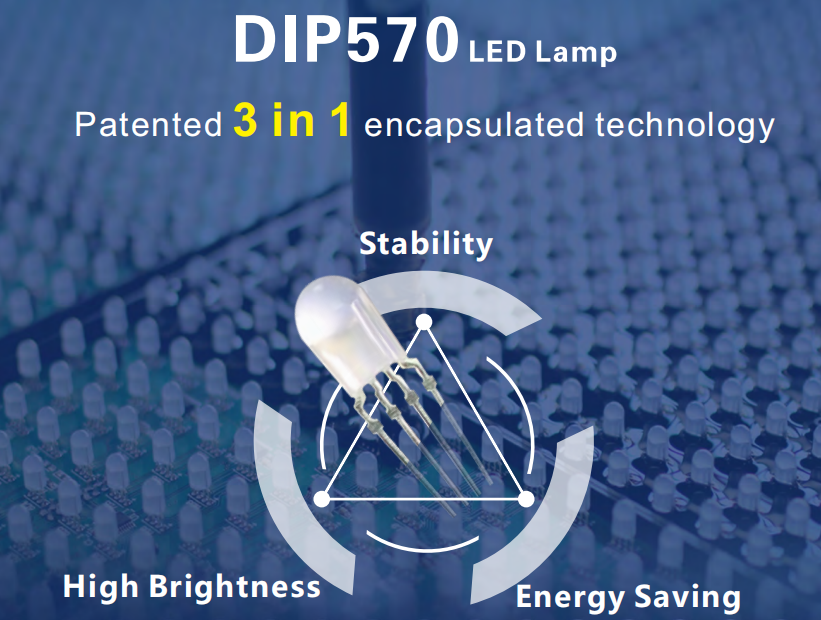When purchasing outdoor LED displays, the most perplexing question is:
Today, Kingaurora—with 16 years of expertise in outdoor DIP LED technology—will guide you through everything about pixel pitch to help you select the perfect LED display for your needs!

1.Basic Concept of Pixel Pitch
Pixel pitch refers to the center-to-center distance between adjacent pixels on an LED display, measured in millimeters (mm). A smaller value indicates higher pixel density per unit area, resulting in finer image quality. For outdoor applications, selecting the appropriate pixel pitch requires balancing display performance with environmental factors.

2. P4-P6: High-Density Precision Displays
P4 (4mm Pixel Pitch)
- Pixel Density: 62,500 dots/m²
- Optimal Viewing Distance: 4-20m
- Key Advantage: Ultra-high definition with exceptional detail rendering
- Typical Applications:
• Premium commercial complex facade advertising
• Landmark building media walls
• Close-viewing exhibition halls
- Note: Higher cost, requires high brightness support (≥8000nits)
P5 (5mm Pixel Pitch)
- Pixel Density: 40,000 dots/m²
- Optimal Viewing Distance: 5-25m
- Best Value: Optimal balance between image quality and cost
- Typical Applications:
• Urban commercial district advertising screens
• Mid-distance viewing areas in large stadiums
• Transportation hub information displays
P6 (6mm Pixel Pitch)
- Pixel Density: 27,777 dots/m²
- Optimal Viewing Distance: 6-30m
- Cost-Effective Solution: Lower maintenance costs
- Typical Applications:
• Highway billboards
• Medium-sized urban plaza displays
• Community commercial center information screens
3. P8-P10: Main Force for Medium-distance Applications
P8 (8mm Pitch)
- Pixel Density: 15,625 Dots per Square Meter
- Optimal Viewing Distance: 8-40 Meters
- Mainstream Outdoor Choice: Excellent comprehensive performance - Typical Applications: Large billboards on urban arterial roads, long-distance viewing areas in stadiums, information dissemination in large industrial parks
P10 (10mm Pitch)
- Pixel Density: 10,000 Dots per Square Meter
- Optimal Viewing Distance: 10-50 Meters
- A Model of Economic Practicality: Low initial investment
- Typical Applications: Roof advertisements for long-distance viewing, guidance systems in large parking lots, information display screens in ports and docks.
4. P12-P16: Solutions for Ultra-long-distance Display
P12 (12mm Pitch)
· Pixel Density: 6,944 Dots per Square Meter
· Optimal Viewing Distance: 12-60 Meters
· Expert in Long-distance Display: Remains clear even under strong light
· Typical Applications: Advertising spaces on cross-river bridges, information signs around airport runways, signboards in large logistics parks
P16 (16mm Pitch)
· Pixel Density: 3,906 Dots per Square Meter
· Optimal Viewing Distance: 16-80 Meters
· Economical Option for Ultra-long Distance: Suitable for projects with limited budgets
· Typical Applications: Long-distance advertisements on highways, publicity around the perimeter of large construction sites, long-distance information signs on mountains
5. Key Factors for Selecting the Pixel Pitch
(1) Viewing Distance: Follow the principle of "Minimum Viewing Distance = Pixel Pitch Value × 1000" (For example, the minimum viewing distance of a P10 screen is approximately 10 meters).

(2) Content Type:
Video Advertisements: P6-P10 is recommended.
Text Information: P10-P16 can also meet the requirements.
Fine Images: P5 and below are required.
(3) Ambient Brightness:
Higher brightness is required in strong light environments (such as deserts and seashores).
In regions with frequent rainy weather, the pixel pitch can be appropriately increased.
(4) Budget Considerations:
Initial Investment: P4 is 3-5 times more expensive than P16.
Long-term Operation: Smaller pixel pitches consume more energy.
(5)Maintenance Convenience:
Screens with larger pixel pitches are more convenient to maintain.
For installations at high altitudes, P8 and above are recommended.
Since 2016, Kingaurora has been deeply engaged in the field of outdoor LED display. During its years of development, with a persistent pursuit of technological innovation and an accurate understanding of market demands, it has forged ahead. From its initial involvement in the research, development, and manufacturing of LED display screens to its current status as a highly recognized leading brand in the industry, Kingaurora has continuously broken through technical bottlenecks, accumulating profound technical expertise and rich practical experience.
Moreover, Kingaurora has also introduced innovative solutions for special scenarios such as curved screens and wind-resistant and ultra-light screens. These include the curved screen series and the grid screen series with high light transmittance and an aviation-grade aluminum alloy frame.

Not sure how to choose? Leave it to Kingaurora!
All you need to do is tell us: the installation location, the viewing distance, and the main purpose.











3th Building,Gaosite Zone Pingshan
New District, Shenzhen

sevice88@kingaurora.com
3th Building,Gaosite Zone Pingshan
New District, Shenzhen